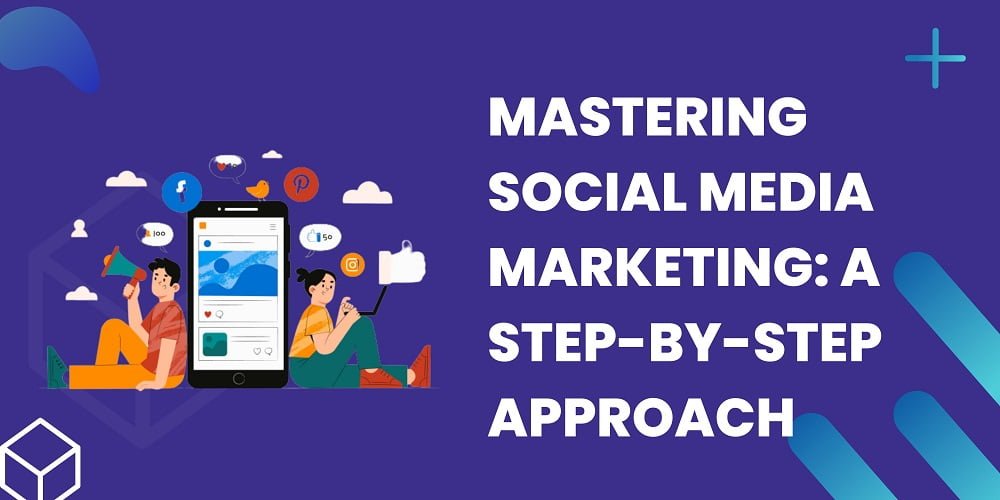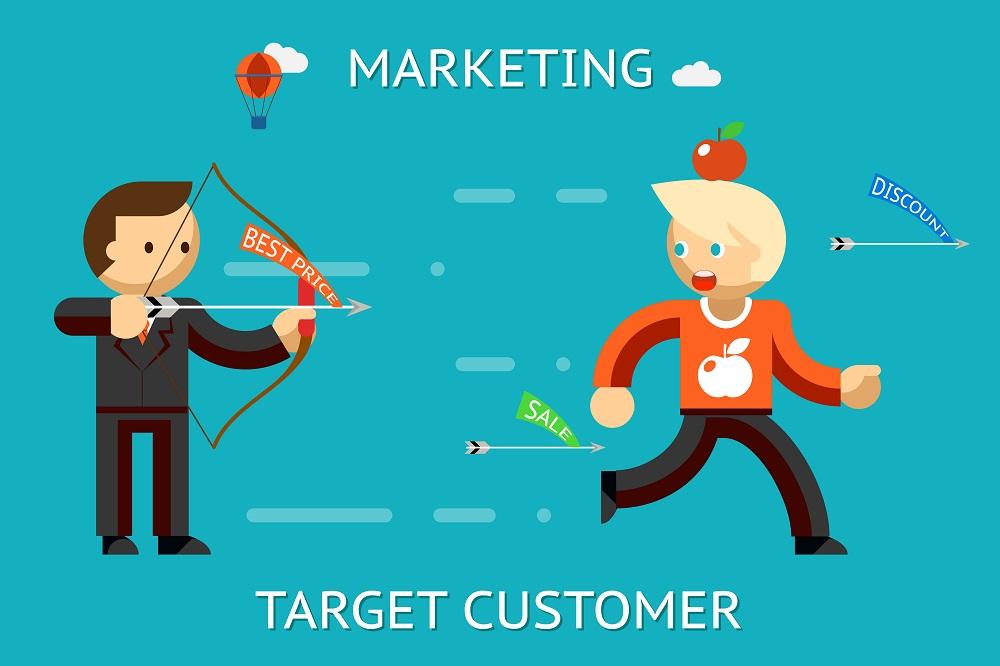
Do you wish to make your social media marketing strategy rock? Here is the step-by-step approach for you. Don’t miss a point or you’ll end up experiencing a big loss.
Step 1: Understand Your Target Audience

What is Target Audience?The target audience is the group you want to engage. They are active participants, not just spectators. Understanding their needs and desires is crucial. Craft a narrative that resonates with their hearts. They are constantly evolving. Adapt your artistry to their changing preferences. Create a masterpiece that fits into their lives. |
|---|
Identifying your target audience’s demographics, interests, and online behavior
- Collect the demographic details of your targeted audience – age, gender, location.
- Try to understand what captures their attention: interests, hobbies, preferences, and online activities.
Conducting market research and using analytics tools to gain insights
- Conduct surveys, interviews, or focus groups to gather valuable feedback and opinions directly from your audience.
- Utilize analytics tools like Google Analytics, social media insights, or customer behavior tracking to gain data-driven insights.
- Create fictional representations of your ideal customers based on research and data.
- Dive into their motivations, challenges, goals, and pain points to align your content strategy with their needs.
Step 2: Setting Clear Goals and Objectives

How to set goals and objectives for your digital marketing campaign?Setting goals for your digital marketing campaign involves a few simple steps. Start by defining specific outcomes you want to achieve, like increasing website traffic or generating leads. Make sure your goals are specific, measurable, attainable, relevant, and time-bound (SMART). Consider your target audience, industry benchmarks, and available resources. Align your goals with overall business objectives and create a roadmap with strategies and tactics. Monitor key metrics to track progress and make adjustments for optimal performance. |
|---|
Defining specific, measurable, achievable, relevant, and time-bound (SMART) goals
- Make sure your goals are achievable, realistic, and within your capabilities.
- Align them with the overall purpose of your social media marketing efforts.
- Set a specific timeframe for achieving your goals to keep yourself accountable.
Aligning goals with your overall marketing strategy
- Ensure your social media goals are aligned with your broader marketing objectives.
- Consider how social media can support and enhance your overall business strategy.
- Ensure consistency and coherence across different marketing channels and initiatives.
Tracking key performance indicators (KPIs) to measure success
- Use social media analytics tools to track & know how your campaigns are performing.
- Regularly monitor and analyze the data to gain proper insights & make informed decisions for optimizing your strategy.

|
To choose the right social media platform for your business, consider your target audience and their preferences. Research demographics and engagement patterns. Align your objectives with each platform’s features. Evaluate advertising options, analytics, and community-building features. Prioritize quality over quantity and maintain a strong presence. Regularly reassess your choice to stay ahead of trends and maximize impact. |
|---|
Evaluating platform demographics and user behavior to determine the best fit
- Understand the demographics of each platform’s user base (age, gender, location, interests).
- Analyze user behavior like (engagement levels, content preferences, and communication style).
- Compare these factors with your target audience to identify the platforms that align best with your goals.
Strategies for leveraging multiple platforms effectively
- Explore how to create a cohesive brand presence across multiple platforms.
- Identify the strengths of each platform and tailor your content accordingly.
- Develop a cross-platform promotion strategy to maximize reach and engagement.

|
To create engaging and shareable content, understand your audience’s interests, deliver valuable content, and use attention-grabbing visuals. Craft compelling storytelling, keep it concise, and add interactive elements. Inject personality, use multimedia, and optimize for social sharing. |
|---|
Developing a content strategy based on audience preferences and platform-specific formats
- Understand what type of content resonates with your target audience.
- Customize your content strategy to match the unique features & formats of different social media platforms.
- Experiment with different content formats like videos, images, infographics, blog posts, or live streams.
Crafting compelling headlines, captions, and visuals to capture attention
- Create attention-grabbing headlines that spark curiosity or offer value.
- Craft engaging captions that resonate with your audience and encourage interaction.
- Use high-quality visuals make your content visually appealing (images, videos & graphics)
Utilizing storytelling, user-generated content, and interactive elements to boost engagement
- Tell compelling stories that emotionally connect with your target audience.
- Don’t make your blog posts complex to read and understand. Make them user friendly and thus use conversational language.
- Incorporate interactive elements like polls, quizzes, contests, or live Q&A sessions to actively involve your audience.

|
To implement effective social media advertising, define goals and target audience. Choose platforms wisely. Create compelling ads. Use targeting options effectively. Set budget and optimize placements. Monitor and analyze performance. Test and refine strategies. Track key metrics for success. |
|---|
- Explore various ad formats such as image ads, video ads, carousel ads, or sponsored posts.
- Understand the objectives behind each ad type, such as brand awareness, lead generation, or driving conversions.
Targeting and retargeting strategies for maximizing ad reach and conversions
- Define your target audience and use precise targeting options available on social media platforms.
- Implement retargeting campaigns to reach users who have previously engaged with your brand.
- Utilize custom audience segments, lookalike audiences, and interest-based targeting for better results.
A/B testing, monitoring ad performance, and optimizing campaigns
- Conduct A/B tests to compare different ad variations and optimize your campaigns.
- Continuously monitor the performance of your ads, analyzing metrics like click-through rates, conversion rates, or cost per acquisition.
- Make data-driven decisions to optimize your ad campaigns and achieve better results over time.
Step 6: Building and Nurturing a Community

How to build and nurture a community?To build and nurture a digital marketing community, define brand values and mission – Create engaging content. Listen and respond to members. Encourage discussions and user-generated content. Provide exclusive rewards. Collaborate with influencers. Adapt strategies to meet evolving needs. Foster connections and engagement. By following these steps, you can cultivate a thriving community. |
|---|
- Respond promptly and authentically to comments, messages, and mentions on social media.
- Actively listen to your audience’s feedback, concerns, and questions.
- Participate in conversations and build relationships with your followers.
Encouraging user-generated content and fostering brand advocates
- Encourage your audience to create and share content related to your brand.
- Showcase user-generated content to strengthen the sense of community.
- Recognize and reward brand advocates who consistently support and promote your brand.
Hosting contests, giveaways, and live events to strengthen community bonds
- Organize contests or giveaways that encourage participation and engagement.
- Host live events to interact with your community in real-time (Webinars, Q/A Sessions).
Step 7: Analyzing and Adjusting Your Strategy

How to analyze and adjust your digital marketing strategy?To analyze and adjust your strategy effectively, collect relevant data. Identify key performance indicators. Analyze insights and make data-driven adjustments. Monitor results and iterate as needed. Stay aligned with objectives and adapt to market changes for optimal outcomes. |
|---|
- Use analytics tools provided by social media platforms to track key metrics and performance indicators.
- Monitor metrics such as engagement rate, reach, impressions, click-through rate, and conversion rate.
- Gain insights into audience behavior, demographics, and content performance.
Identifying trends, patterns, and areas for improvement
- Analyze the data collected to identify trends, patterns, and areas where your strategy is performing well or lacking.
- Look for patterns in content types, timing, or messaging that resonate with your audience.
- Identify any gaps or opportunities that could be explored to improve your social media marketing efforts.
Making data-driven decisions and adapting your strategy accordingly
- Use the insights gained from analytics to make informed decisions and adjustments to your strategy.
- Experiment with new approaches, content formats, or targeting strategies based on data-driven findings.
- Continuously monitor and evaluate the impact of your adjustments to optimize your social media marketing strategy.

|
Staying up-to-date with social media trends is vital for a successful digital marketing strategy. Follow industry news, monitor audience preferences, engage in online communities, and stay connected with influential social media accounts and thought leaders. Experiment with new features and formats, and continuously analyze campaign performance. By staying informed and adaptable, you can effectively leverage social media trends to engage your audience and drive better results. |
|---|
Exploring emerging platforms and features
- Stay informed about new social media platforms that are gaining popularity.
- Explore and experiment with emerging features and functionalities on existing platforms.
- Assess the potential benefits and relevance of these emerging platforms and features for your business.
Keeping abreast of algorithm changes and best practices
- Stay updated on algorithm changes implemented by social media platforms.
- Follow reputable sources and industry experts to learn about the latest best practices.
- Adapt your strategies to align with algorithm updates and stay ahead of the curve.
Engaging in ongoing learning and professional development
- Invest time in continuous learning about social media marketing trends and techniques.
- Attend the latest webinars, workshops, or conferences to update your skills according to recent trends.
- Engage in networking with other professionals in the field to get valuable insights and experiences.
Conclusion
By following the above-mentioned 8 steps approach, you can make your social media strategy win the league. This is not just extracted from some random research pieces or it is not based on any hypothetical assumptions; rather these are based on some tried and tested practices.
About The Author: Karan Sharma is the co-founder & CEO of Kinex Media Inc. He intends to bring a massive transformation in eCommerce web designing & development. His team of talented IT professionals knows the secret of getting huge conversions.



